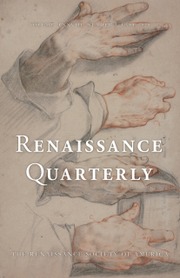Exploring the multifaceted portrayal of women in Spanish Golden Age literature reveals a tapestry of diverse representations. The seventeen essays in this collection provide a detailed analysis of plays, poetry, and novels and how their female characters, previously overlooked as taking only a secondary role compared to men, were complex and showcased various historical possibilities for women in the sixteenth and seventeenth centuries.
Alvitti studies the character Jezebel in Tirso de Molina’s La mujer que manda en casa as an example of wickedness and immorality in women. Nieto Nuño similarly works with this theme of deplorable figures by analyzing how playwrights contrasted the infamous serial killer La Serrana de la Vera with Catholic nobles. To contextualize these dishonorable depictions with historical realities, Escudero Baztán looks at juridical records to see how women were described within the legal system to understand their motives and capabilities in committing crimes.
The theme of women stepping out of their gender roles and entering armed conflict is explored by Martínez López and Lázaro Niso, who look at the duality of female characters in the plays of Cubillo de Aragón to understand gender not just through feminine use of reason but also through masculine crossdressing and valiant battle. Lázaro Niso argues these women-warriors were inspired by the biblical heroine Esther (99). Trambaioli expands on this idea by analyzing Esther’s role in Lope de Vega’s play La hermosa Esther as both the perfect wife and the savior of the Jewish people. The hybridity of both a public and private set of norms for women is also a topic explored by Marigno in his article on Rosaura’s role in La vida es sueño.
The essay by Matas Caballero examines a corpus of Luis de Góngora’s sonnets, some of which were dedicated to praiseworthy nobles and friends while others criticized the licentious prostitutes and comediennes. The subject of promiscuity is analyzed by Roncero López by looking at adulterous mothers and wives in picaresque literature, primarily Guzmán de Alfarache. Sampedro Pascual compares how Cubillo de Aragón and Lope de Vega characterize unfaithful wives and the objective concept of honor in society. Conversely, Sainz Bariain’s article explores the intertextuality between Aragón’s depictions of virtuous women and the devotionals of various friars that detailed proper morality for Christian spouses. However, it’s important to note that women were not limited to matrimony or a life of criminality. Martínez Berbel looks at the character of Marcela in Don Quijote to argue Cervantes believed in resilient, autonomous women capable of defending themselves without the need of wandering knights or marriage. Vaccari reflects on the dynamic between strong and witty maidservants and their masters, as well as other male figures like the jester, in the plays of Agustín Moreto. The editors show that women were often portrayed in binary representations, oscillating between archetypes of virtuous and submissive or cunning and dangerous, yet this depiction could also be contested by figures like Marcela.
Cañas Murillo’s article analyzes Sor Juana’s often overlooked comedies and how they reproduce courtly theatrical festivals in the style of plays from Calderón de la Barca. With regard to writings from religious sisters, Lobato and Robles, looking at an anonymous work from a convent, consider the purpose of these nuns’ writings as well as the literary resources they had access to help form their ideas. To further understand female exemplarity at the time, Borrego Gutiérrez explores the influence of Teresa of Ávila on Mother Cecilia del Nacimiento’s autobiographical works. The volume also stretches into the eighteenth century as Escalante Varona looks at plays from María Rosa Gálvez and María de Laborda to consider continuities and ruptures between women writers of the Golden Age and Enlightenment.
In sum, the monograph provides an extensive analysis of works written by women as well as the role of women in the writing of male dramatists during the Siglo de Oro. The authors show the societal attitudes toward women and offer insight on the complexities of gender roles at the time. The volume would be of great use to researchers of gender studies, Catholicism, and the work and portrayal of women in Golden Age Spanish literature and culture.


